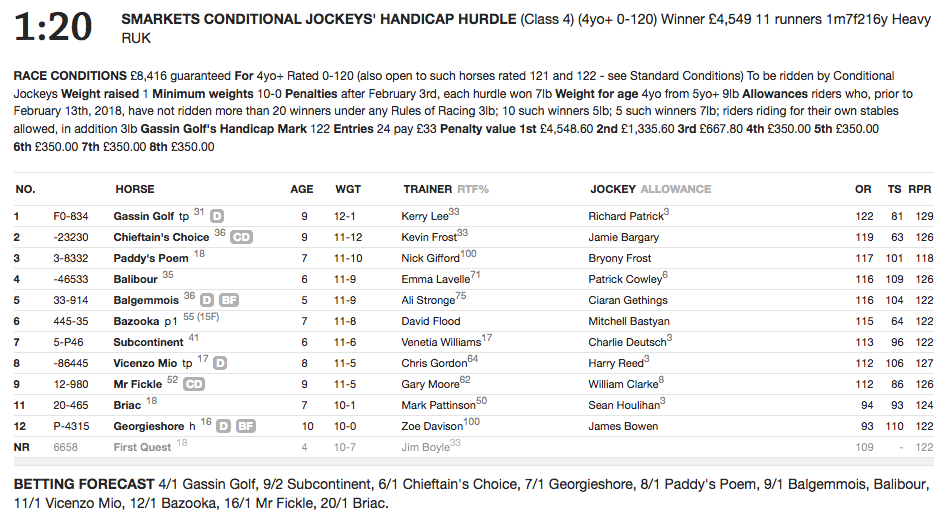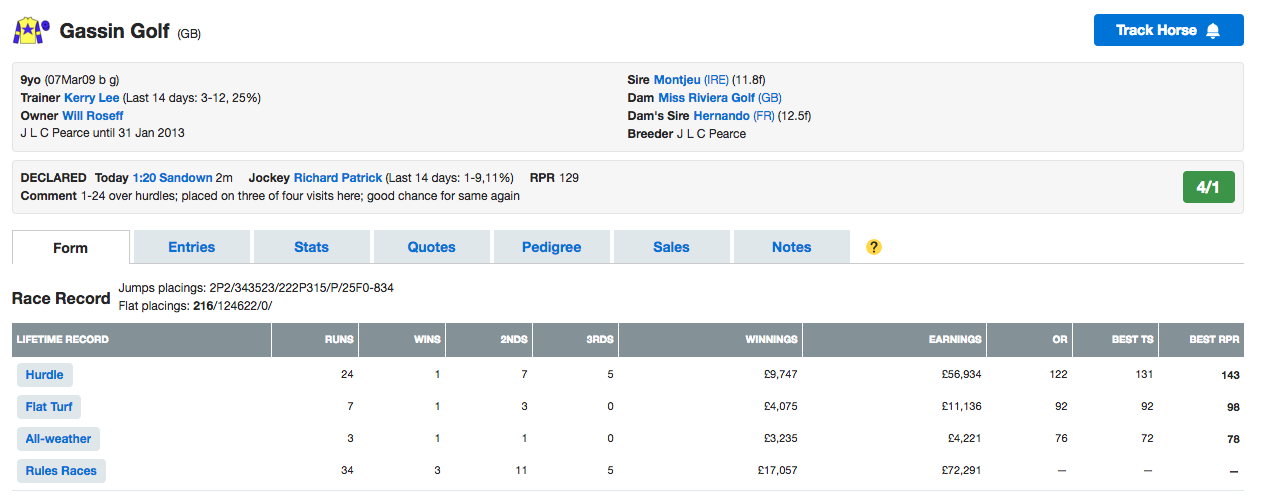The February edition of What Really Wins Money will be winging its way to readers this month, and is a Cheltenham Special!
This week is D.I.Y week. If you want to do some detective work (once the Cheltenham race cards have been finalised), then the best way to start is with past trends. This is also known as ‘race profiling’, the kind of thing Cracker would do were he a punter. (Horses are breathing a collective sigh of relief that Cracker was not a jockey!)
There are certain characteristics that winners at past Cheltenham Festivals share which might provide an insight into future performance.
I’m going to list a number of free-to-view websites which provide these profiles for you, then show you how to find this information within the race cards at www.racingpost.com.
This is an excellent site to start with: http://roadtocheltenham.betting-directory.com/trends.php. The trends are not as in depth as other sites, but are well worth reading.
This website – https://juicestorm.com/horse-racing/2018-cheltenham-festival-betting-trends-day-one/ – provides a list of positives and negatives for the major races at Cheltenham. Great for creating shortlists of likely contenders and quickly dismissing those with a negative profile
This website – http://www.proformracing.com/NEWS/233/cheltenham-festival-2018-stats-pack,1.html – is a free-to-download pdf. The first section details important pre-Cheltenham races. I like the second part, which has a pace angle, something I have not come across.
These three will keep you busy, that is for sure.
Now, how to find the pertinent information…
Below is a race chosen at random from today’s www.racingpost.com. Click on ‘Cards’, ‘Expand all’, choose your race course and ‘Show all race cards for this meeting on one page’.
Once you have done that, all of the races for that meeting will be on one page. Select ‘At-a-glance’ to view the races in a simple readable format.

Let’s tackle the simpler elements first. If the winning horses tend to be of a certain age, you can find the age under the ‘AGE’ column. Simple.
‘WGT’ stands for ‘weight’. So if one of the profile states that there were no winners, for instance, over a certain weight, you can find that information there.
If it is favourable for the horse to have run previously at the course, then the ‘C’ in the ‘HORSE’ column, as one of the annotations, will tell you the horse was an actual course-winner.
If one of the parameters for a previous winner is that they had to have run, say, within the last 45 days, then in the ‘HORSE’ column you will see a number to the right of the horse’s name: 31 next to Gassin Golf tells us that the horse last ran 31 days ago.
The figures in the column to the right of the ‘NO’ column, and between the ‘HORSE’ column, is the form. The latest form is on the right-hand side. In order to access that form, you must click on the horse’s name.
Clicking on Gassin Golf below, we see a whole range of information.
You will see reference to ‘the Irish’ or ‘Irish trainers’ being favoured. In order to see the nationality of the trainer, click on the trainer’s name. You will see whether that trainer is based in the UK or Ireland.

This page is key for accessing previous form.
So one of the key trends in the Arkle is ‘Ten of the last 15 winners had won a novice chase by the first week in December’.
By clicking this ‘FORM’ column and scrolling down to the list of races, you will be able to see the types of race.
‘HcH’, for instance, is a ‘Handicap Hurdle’. A Novice Chase therefore will be ‘NvC’, or something like that. Do click on any race for a full description of the race title.
You are now armed with the ability to read these key trends and scour the Cheltenham race cards for horses whose characteristics closely mirror those of previous winners.
Do get in touch if you need any clarification. I would dearly love to get a head start with these trends but the Cheltenham Festival race cards are not available at present.
Happy hunting!
